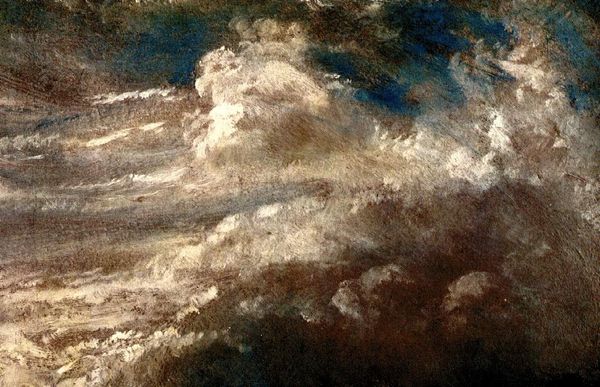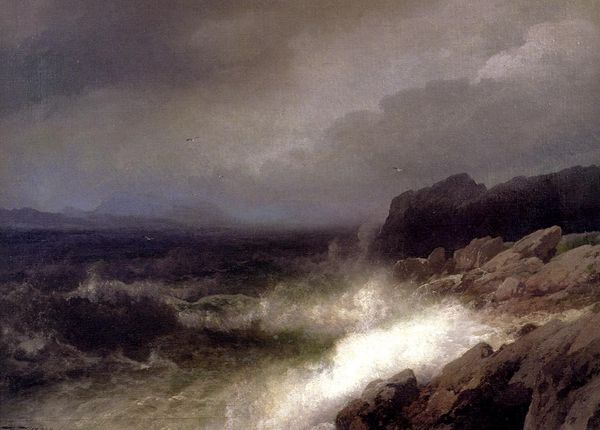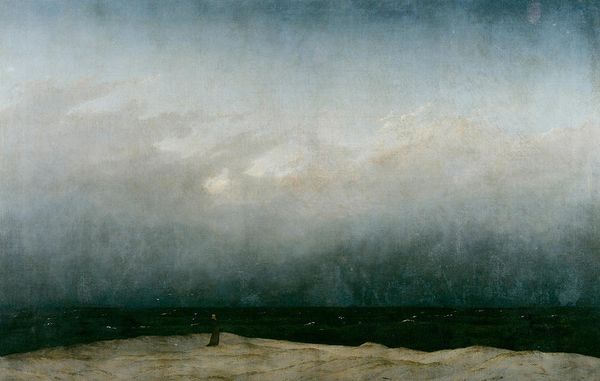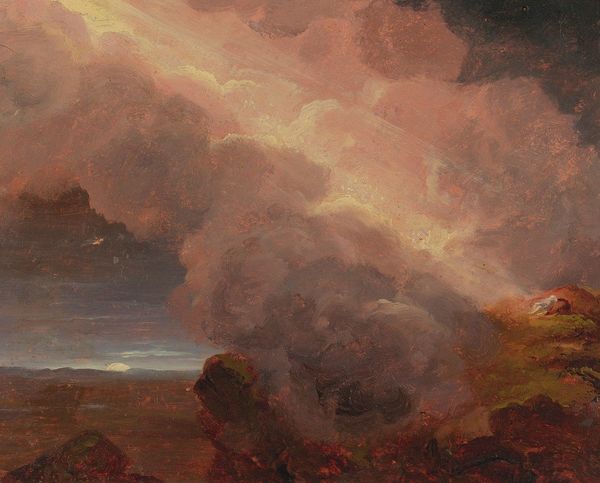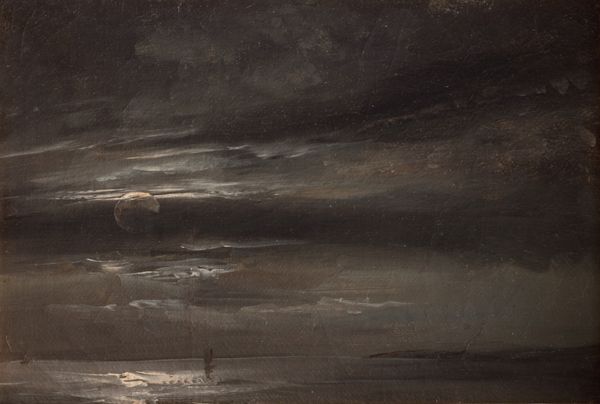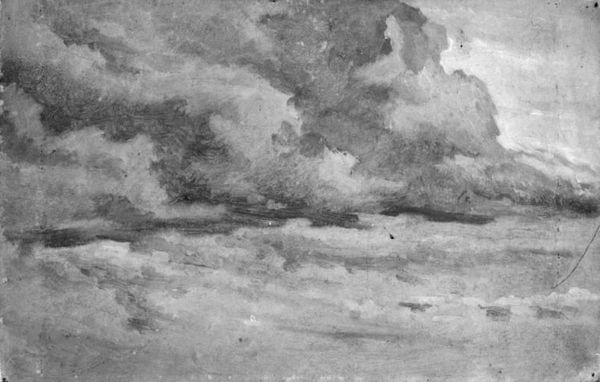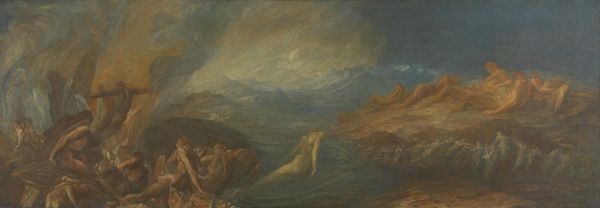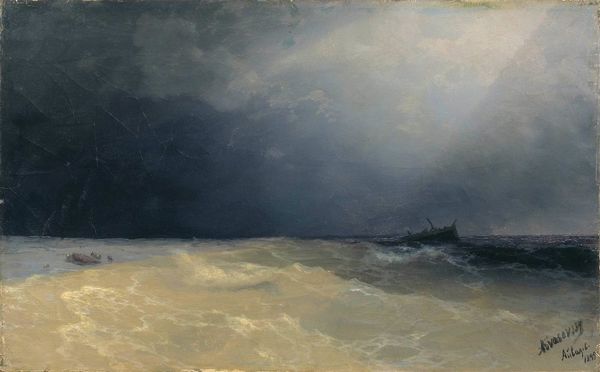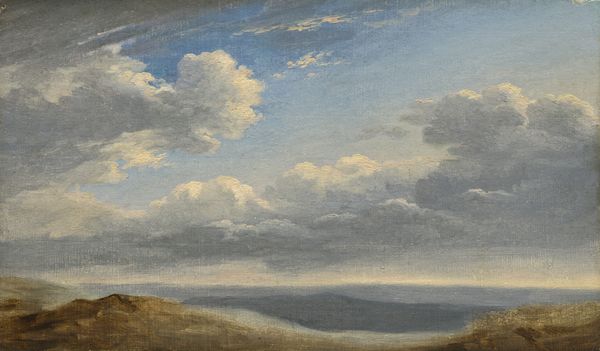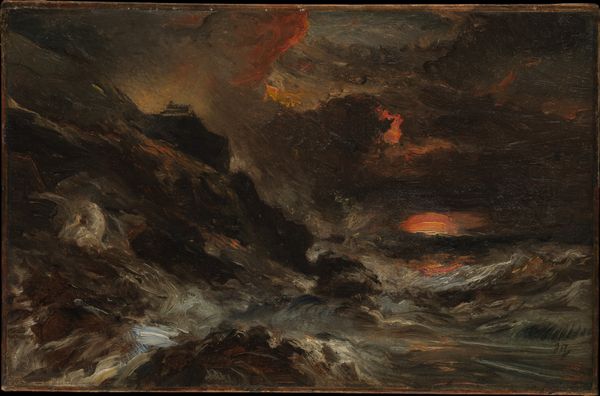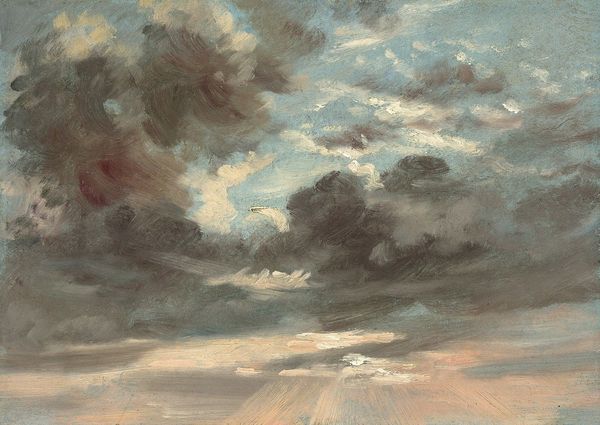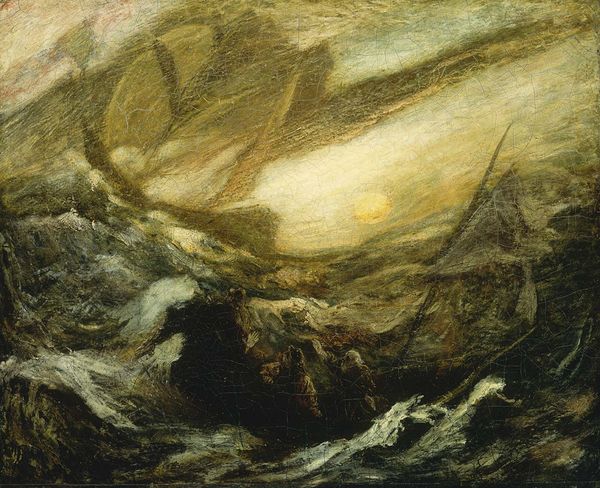
Copyright: Public domain
Curator: Welcome. We're looking at Andreas Achenbach's "Stormy Coast", an oil painting from 1888. It's a striking example of late 19th-century landscape painting. Editor: My goodness, it feels like the apocalypse. The color palette is muted—grays and browns that clash in an unsettling yet beautiful way, don't you think? Almost monochrome, but with those glimmers of light pushing through. Curator: Achenbach was celebrated for his dramatic seascapes. This work showcases the influence of Romanticism, focusing on the sublime power of nature while integrating elements of realism, evident in the depiction of the turbulent waves and imposing sky. Editor: Romanticism indeed! I'm totally picturing myself battling those waves! There's such a raw, almost frantic energy in those brushstrokes. They really pull you into the chaos. You feel the cold spray! It’s exhilarating and slightly terrifying all at once. Curator: His depictions of coastal scenes often emphasized the sheer force and drama of the natural world. Achenbach, and other artists like him, often captured this from the position of a plein-air painter to better emulate real weather effects. There is an institutional focus we see here: the shift of painting from studios to being outside in situ allowed new visual approaches. Editor: And even in such apparent disarray, I sense a delicate structure at work. I love how a single, lone bird seems to be almost screaming upwards in its futile attempt to resist the gale, high above a barely-visible sailboat in the distance... It all has such a personal effect on my eye, that's hard for me to ignore. Curator: Indeed. It certainly inspires reflection on man's place within the greater order, the social relation between humankind and mother nature, but moreover this is something Achenbach repeated quite a lot in his life and which brought him a lot of support within academic circles of the time. Editor: Well, academic or not, the pure wildness sings to me! Thanks to its somber vision, it also resonates with something inside me, something that I won't explore for now. But I'll take this feeling and perhaps create with it. Curator: Precisely, and as art reflects social history, so, too, must it affect personal feeling, offering some new meaning or another to each member of the viewing public. Thank you for joining me in looking at Achenbach.
Comments
No comments
Be the first to comment and join the conversation on the ultimate creative platform.
